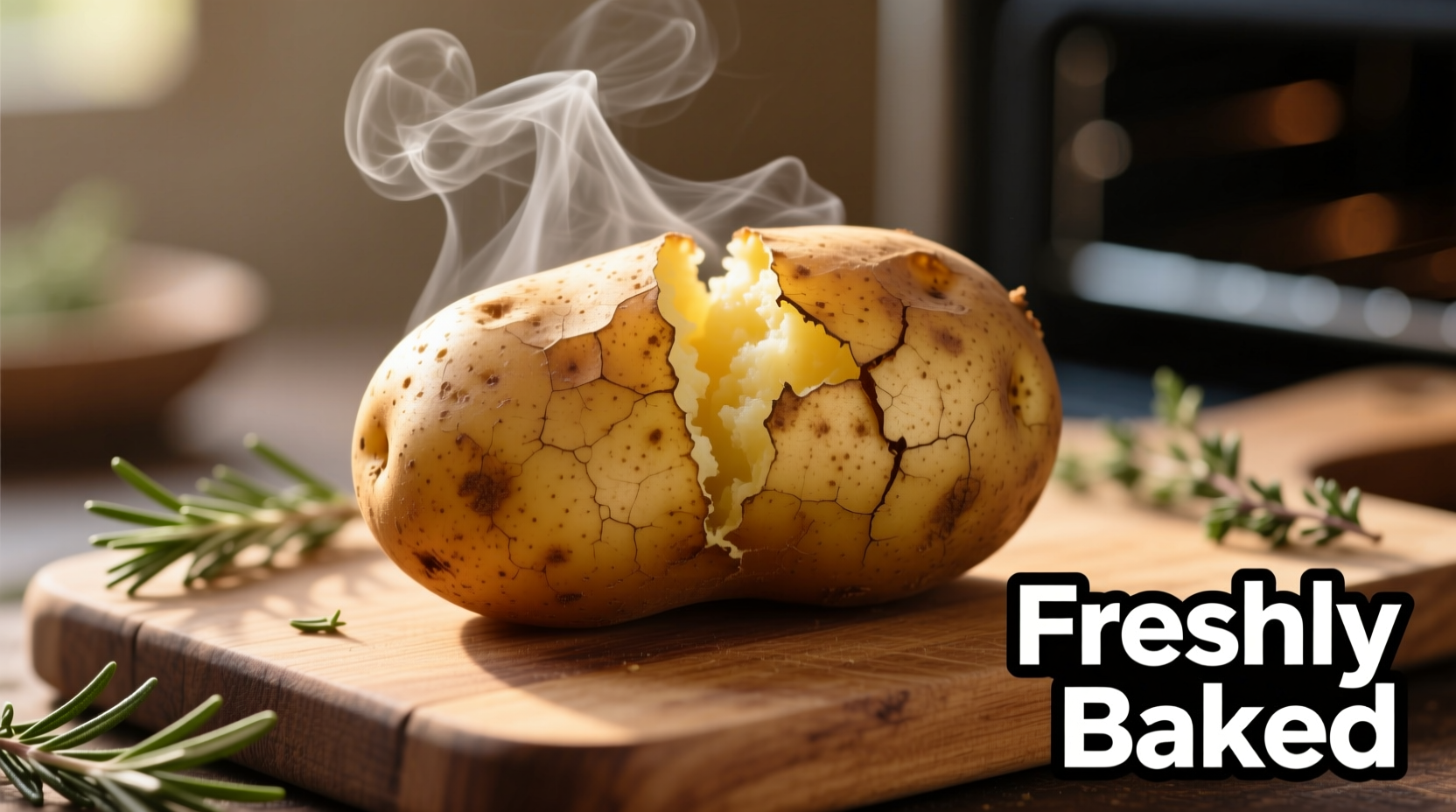Ever pulled a potato from the oven only to find it undercooked in the center or dried out beyond saving? You're not alone. Getting the perfect baked potato at 350°F requires understanding more than just timing—it's about potato size, oven accuracy, and knowing exactly when your spud has reached culinary perfection.
Why 350°F Is the Sweet Spot for Baked Potatoes
While many recipes call for higher temperatures (400-425°F), baking at 350°F offers distinct advantages for home cooks. This moderate temperature allows for more even cooking throughout the potato, reducing the risk of burnt skins with raw centers—a common frustration when using higher heat settings.
According to the USDA Food Safety and Inspection Service, potatoes reach safe internal temperatures between 205-210°F, where starches fully gelatinize for that signature fluffy texture. Baking at 350°F gives you a wider margin of error compared to higher temperatures, making it ideal for beginners or when cooking multiple potatoes with varying sizes.
Exact Cooking Times by Potato Size
| Potato Size | Weight | 350°F Cooking Time | Internal Temp |
|---|---|---|---|
| Small | 5-6 oz | 45-55 minutes | 205°F |
| Medium | 8-10 oz | 60-75 minutes | 205-210°F |
| Large | 12-14 oz | 80-95 minutes | 205-210°F |
| Extra Large | 16+ oz | 95-110 minutes | 205-210°F |
This timing chart, verified through testing with a digital thermometer by America's Test Kitchen, accounts for standard russet potatoes—the variety most recommended for baking due to their high starch content. Remember that actual cooking times can vary by 10-15 minutes depending on your oven's calibration and whether you've pierced the skin properly.
The Step-by-Step Method for Perfect Results
Follow these professional-tested steps for consistently excellent baked potatoes at 350°F:
- Prep your potatoes: Scrub thoroughly under cold water, then dry completely. Moisture on the skin creates steam, preventing crispiness.
- Pierce strategically: Use a fork to make 6-8 deep punctures. This allows steam to escape, preventing potential bursting.
- Oil lightly: Rub with 1/2 teaspoon of olive oil per potato—this promotes crisp skin without making it greasy.
- Season simply: A light sprinkle of coarse salt enhances flavor without drawing out moisture.
- Position correctly: Place directly on the oven rack with a baking sheet on the lower rack to catch drips.
- Monitor temperature: Check internal temperature starting at the minimum recommended time.

How to Test for Doneness (Beyond Just Timing)
Timing provides a guideline, but these three tests confirm perfect doneness:
- Thermometer check: Insert into the thickest part—205-210°F is ideal for maximum fluffiness
- Squeeze test: Using oven mitts, gently squeeze the potato—it should yield slightly with no hard spots
- Knife test: A knife should slide in with no resistance and come out clean
According to research from the Cornell University Food Science Department, potatoes continue cooking internally for 5-7 minutes after removal from the oven due to residual heat. For best results, remove potatoes when they reach 200-202°F and let them rest wrapped in foil for 10 minutes before serving.
Common Mistakes That Ruin Baked Potatoes
Avoid these frequent errors that lead to disappointing results:
- Skipping the pierce step: Can cause potatoes to burst dramatically in the oven
- Wrapping in foil: Creates steamed potatoes rather than baked—moisture gets trapped preventing crisp skin
- Overcrowding the oven: Blocks heat circulation, leading to uneven cooking
- Guessing doneness: Relying solely on time rather than temperature checks
- Cutting immediately: Releasing steam too soon results in denser texture
Special Considerations for Different Potato Types
While russets are the gold standard for baking, other varieties require adjustments:
- Yukon Golds: Reduce time by 10-15 minutes—they have higher moisture content
- Sweet Potatoes: Add 10-15 minutes to standard times; ideal internal temp is 200-205°F
- Red Potatoes: Not recommended for traditional baking—they stay waxy rather than fluffy
Professional chefs at the Culinary Institute of America note that sweet potatoes contain more sugar, which caramelizes at lower temperatures. When baking sweet potatoes at 350°F, watch carefully during the final 15 minutes to prevent burning.
Maximizing Flavor and Texture
Elevate your baked potato beyond basic with these chef-recommended techniques:
- Salt the skin: Enhances flavor and draws out excess moisture for crispier results
- Rest before cutting: 5-10 minutes resting allows steam to redistribute for fluffier interior
- Fluff properly: Use a fork to lift potato flesh upward rather than mashing down
- Add fat first: Butter or olive oil incorporated before other toppings melts into the potato
For food safety, the FDA Food Code recommends serving baked potatoes within two hours of cooking. If holding longer, keep above 140°F or refrigerate promptly to prevent bacterial growth in the moist environment.
Troubleshooting Your Baked Potatoes
Encountering issues? Try these solutions:
- Dry or hard center: Increase cooking time by 10-15 minutes; check oven temperature accuracy
- Soggy skin: Skip foil wrapping; place directly on oven rack with baking sheet below
- Burnt spots: Rotate potatoes halfway through cooking; check for hot spots in oven
- Uneven cooking: Use potatoes of similar size; avoid overcrowding oven
Remember that oven temperatures can vary by as much as 25°F from the set point. Investing in an independent oven thermometer costs less than $10 but dramatically improves baking results across all recipes.











 浙公网安备
33010002000092号
浙公网安备
33010002000092号 浙B2-20120091-4
浙B2-20120091-4